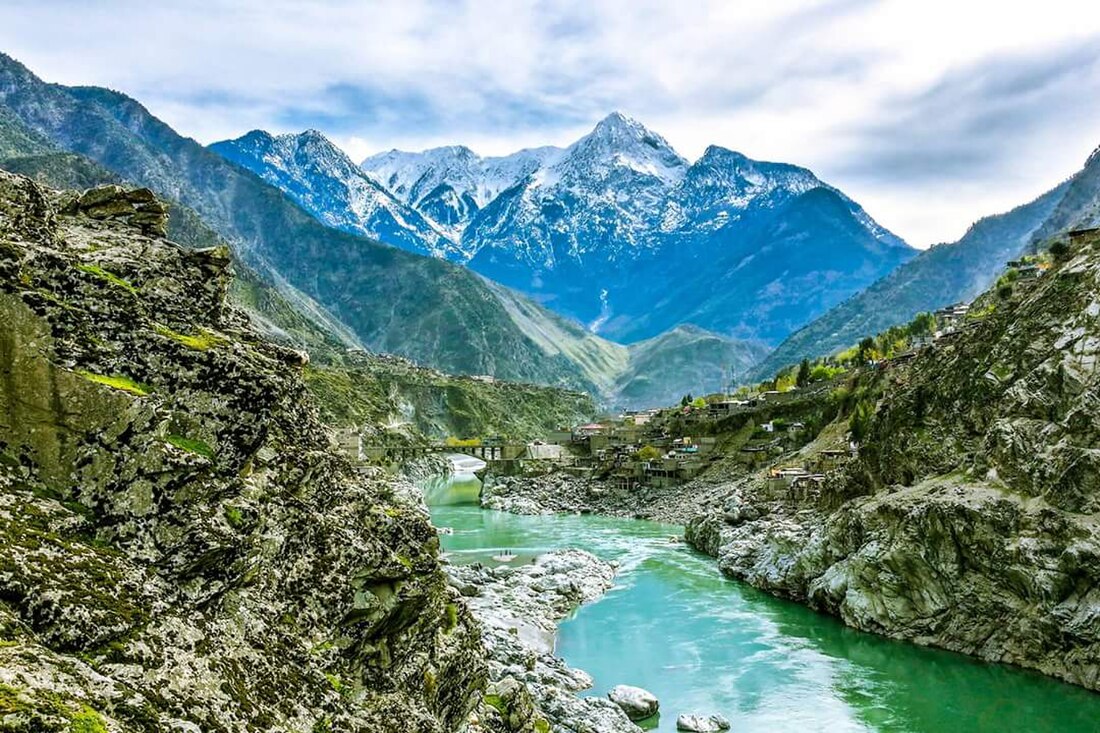Top Qs
Timeline
Chat
Perspective
Kohistan District, Pakistan
District in Khyber Pakhtunkhwa, Pakistan From Wikipedia, the free encyclopedia
Remove ads
Kohistan District, also known as Indus Kohistan (Kohistani: سندھُ کوستَیں)[2][3] and Hazara Kohistan,[4] was a district within the Hazara Division of Khyber Pakhtunkhwa, Pakistan. Consisting of eastern portion of the larger Kohistan region, it was bifurcated into two districts in 2014: Upper Kohistan and Lower Kohistan. In 2017, the Lower Kohistan District was further bifurcated and a district Kolai-Palas was established.[5][6] It has an area of 7,492 square kilometres (2,893 sq mi) and a population of 472,570 according to the 1998 Census.[7]
Geographically, Kohistan stretched from Gilgit-Baltistan in the north to the Mansehra District in the east to the Battagram District and Shangla and Swat districts in the west.[8]
Remove ads
History
The Kohistan region is mainly inhibited by the speakers of Dardic languages, commonly known as Kohistani people. Until 1 May 1934 Indus Kohistan was included in the Gilgit Agency, when its control was transferred to the North Western Frontier Province.[9] However, its area continued to be counted in the total area of the princely state of Jammu and Kashmir.[10] After independence, Indus Kohistan became part of NWFP, and after it was renamed, Khyber Pakhtunkhwa province.
Remove ads
Geography
The district lies between 34° 54′ and 35° 52′ north latitudes and 72° 43′ and 73° 57′ east longitudes.[8] It was bounded by the Diamer District of Gilgit-Baltistan in the north, Manshera District in the southeast, Kaghan Valley of the Mansehra District in the southeast, Battagram District in the south and Shangla and Swat Districts in the west .[8]

Kohistan is the point of convergence for the Hindukush, Karakorum, and Himalayan mountain ranges, acting as a natural boundary delineating distinct environmental regions within the expanse of the Himalayas, Karakoram, and Hindu Kush mountain chains.[8] This uniqueness of the mountain system also results in rich flora and fauna, thus providing a habitat for unique species such as the Western Tragopan pheasant and the snow leopard.[8]
Remove ads
Education
The literacy rate of the district among the population aged 10 years and older is 11.1%: male 17.23% and female 2.95%. The proportion of the working or employed population to the population aged 10 years and older is 26.47%, which is 70.53% of the total labour force. Out of the total employed population, 71.60% are self-employed, 10.68% work as employees, and 17.32% are unpaid family helpers.[citation needed]
Kohistan's literacy rate is among the lowest in Pakistan and hovers around 20%.[11] It has the lowest Human Development Index of all districts in Khyber Pakhtunkhwa.
Demographics
Summarize
Perspective
At the time of the 2017 census the district had a population of 784,711, of which 424,643 were males and 360,055 females. The rural population was 706,433 (97.95%) while the urban population was 72,654 (2.05%). The literacy rate was 76.20% - the male literacy rate was 86.40% while the female literacy rate was 65.76%. 3,172 (0.24%) people in the district were from religious minorities, mainly Christians.[13]
At the time of the 2017 census, 91.96 of the population spoke Kohistani, 7.09% Pashto, 0.36% Urdu and 0.63% Punjabi as their first language. 2.07% of the population spoke languages classified as 'Others', mainly Kohistani languages.[13]
The major language of the area is Kohistani, which in the 1981 census, was the mother tongue of 92% of households.[14] The variety spoken in the District of Kohistan has formed the basis of a literary language.[15] It is very close to the Dardic Language of Kohistan: the two share 86% of their basic vocabulary.[16]
Other languages, such as Pashto, Urdu and Punjabi, are found more in urban than rural areas.
Remove ads
See also
References
Wikiwand - on
Seamless Wikipedia browsing. On steroids.
Remove ads


